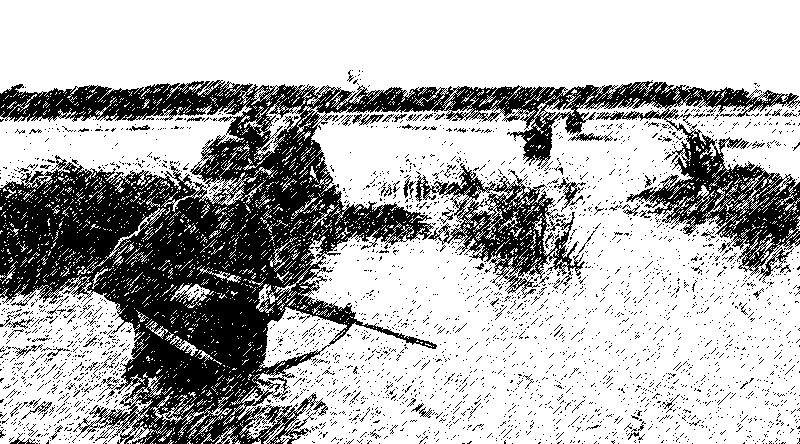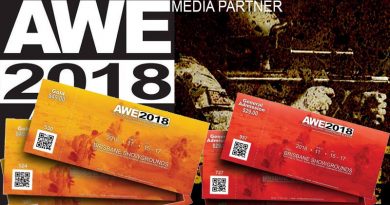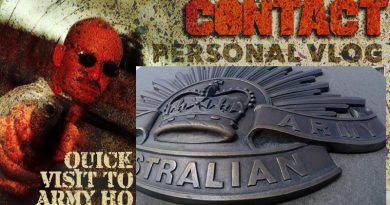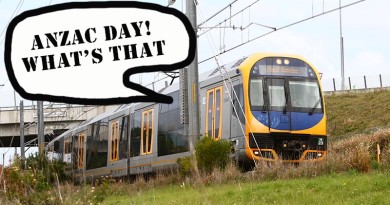Chapter 28: Our First Operation

I’m going to pause for a minute or two and become an armchair general and give youse blokes a bit of background.
Phuoc Tuy Province, or as my mate Smithy calls it, Fuck You Province, is located in the south east corner of South Vietnam. To the east is the South China Sea. To the south is the delta region. In the corner between these two is Vung Tau; a rather large provincial city of French influence. It has a harbour and Australia’s Logistical Support Group is located there. The yanks have a large airbase and the South Vietnamese have a military academy. It is also a centre for R&C (rest in country) for Australians, New Zealanders, Americans and VC. Yes, the VC. Saigon is located to the west about a two hour drive away.
The province is mostly flat save for a few scattered mountains. Most of the population is located in the east. As you move inland there are smaller and smaller hamlets surrounded by rice paddies until you meet the jungle. Up the centre of the province is route 2.
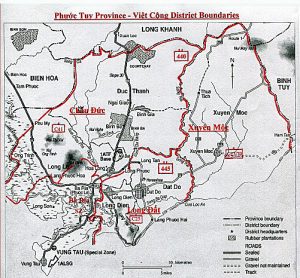 The enemy had three units in the province D440 Bn, D445 Bn and D67 NVA Engineer Bn. This map shows how they carved up the province.
The enemy had three units in the province D440 Bn, D445 Bn and D67 NVA Engineer Bn. This map shows how they carved up the province.
The Australian infantry battalions carved up the province as well. 2RAR covered the area west of route 2 which was Chau Duc (C41 Company of D440 Bn) country and the D67 NVA engineer battalion were quite active as well.
Our first operation was to deploy to the Nui Dinh Mountains. A fair bit of planning goes into each operation. The AO (area of operation) has to be carved up for each company. The CO allocates areas to the company commanders and they break their AOs down for their platoons, depending upon how they want to operate.
The most important feature of Australian operations in Vietnam, and one of the main reasons for its success, was the Artillery support. Wherever we went we had Artillery support. As we were nearly always outside of the range of guns from Nui Dat, temporary bases had to be set up and the guns were located closer to our AO. As you can imagine this was a logistical nightmare and involved a lot of personnel who prepared the fire support bases.
Platoons are allocated guns which they have priority over, other guns may be made available should the need arise. The platoon commander prepares his orders and sets out a patrolling program. The FO (Forward Observer) in conjunction with the platoon commander identifies possible targets along the patrol route where the enemy could use for ambushes, forming up places (FUP), that kind of thing; and registers them with the guns that night. The next day, as the platoon moves along its patrolling route, the FO advises the guns of the platoon’s progress and the guns are set on each of those identified targets. So let’s say the FO has identified an FUP as M115. The guns will be set to drop rounds on that target. Should there be a contact near M115, the FO calls “M115, 3 rounds fire for effect,” or something like that, on the radio and – bingo – rounds are in the air in seconds. He then adjusts the fall of shot by moving the fall of shot left or right; drop or add. These Artillery guys are life savers for the infantry.
Now you know as much as I know – or, maybe that should be as little as I know.
Enough of this bullshit and let’s get back to us dumb grunts, and me. It’s all about me.
Davo, our section commander, obtained his orders from Pat the platoon commander and relayed them to us. We all whinged and whined as required by tradition. We were heading to the Nui Dinh Mountains, the other rifle companies would deploy by helicopter. We were going to walk in. That’s right, our first big operation and no insertion by chopper; we were going to walk across the rice paddies and then up that bloody great mountain. At least we are trained for it, walking uphills that is.
My gear is already packed, all I need is ammo. This is distributed by Tojo the platoon sergeant and given to our section 2IC. For my SLR I have seven magazines of 20 rounds: one magazine on the weapon and three magazines in each of my front pouches of my webbing. The webbing is a belt with a shoulder harness to spread the weight over my body. On the web belt I have, in addition to the ammo pouches, two water bottles, a bayonet; and a bum pack. In the bum pack I’d have the day’s meals, mossie repellent, toilet paper, um, and lotsa other stuff that escapes me now but was very important then.
I carried three hundred rounds for the machine gun: 100 rounds slung over each shoulder (just like those Mexican bandits in cowboy movies); and 100 rounds in my bum pack. I also carried the spare barrel for the machine gun which is in a ‘golf bag’ I’d sling over my shoulder. The stuff for the gun must be available at any time, so the rounds and the golf bag are slung after I have my pack on.
We carry six days food and four days water. In addition to the two water bottles on my webbing I also have another two on the outside of my pack and a small water bladder that sits inside the pack. The six days food is made up of two days Australian and four days yank rations. The ration packs are broken down and most of it is thrown out as it is impossible to carry it all. We learn to swap stuff around and as I am a non smoker I swap the cigarettes in the rations for something else. A typical day’s food for me would be thus: breakfast – coffee and a tin of noodles (looks like Chinese short soup); lunch – jube juice (I have a bottle of lime cordial concentrate) and a tin of pecan cake roll; and dinner – coffee and a tin of meat based food and a tin of fruit. Spread over the six days would be some dog biscuits, powdered chocolate drink, lollies, cheese and jam and stuff. We also had 2 small tubes of condensed milk for the six days. The yanks had powdered whitener which tasted like, well powdered whitener. We had barely enough food to survive on given the gruelling physical demands on our bodies
Is it any wonder that we were always hungry and thirsty?
I’d place the food and water bladder in the top half of my pack together with some toiletries: a razor, toothpaste, boot cleaning gear; and a toothbrush. I also had a couple of smoke grenades and a pair of socks in there as well. In the bottom half I had my sleeping gear: a groundsheet, hootchie; and silk inner liner (no sleeping bag as it wasn’t cold).
I’d be dressed in the green shirt with sleeves rolled down, green trousers with the pocket on the side and tightening tabs at the waist which were really great; and no underwear.
All this gear was extremely heavy. In addition to making you grunt when you moved, your eyes bulged when you initially threw the pack (with all the other stuff) on ya back. The important thing was to ensure you had nothing on you that would snare in the jungle, so there was no gear hanging off anywhere – no grenades, no knives, no nuthin’. The movies where guys have grenades, knives and all sorts of shit hanging off the webbing may look tough but it can be very dangerous as it is so easy for stuff to get snagged. Grenades could easily lose their safety pin and ‘boom’ it’s good night.
The final touches were the bush hat, known as the giggle hat, and a sweat rag around your neck to help wipe the sweat away from your eyes and to keep those little bits of debris like small twigs and leaves from falling down your neck and getting rubbed into your skin by the gear on your back.
Oh, I mustn’t forget the rifle, a 7.62mm SLR with a field dressing tapped around the butt. The SLR was hard hitter. Get hit by one of those 7.62 rounds and you don’t get back up. The weapon is robust if a little heavy and it is perhaps a little too long for jungle work.
Going through the jungle was hard work. You’ve probably seen the movies with guys bashing at the jungle with machetes. We didn’t use them because they were too noisy and after 10 minutes of slashing at the jungle you would be buggered anyway. No, for thick jungle we used secateurs and quietly cut our way through. Well the first few blokes did and the rest just followed in single file.
For our first operation I was very apprehensive, who knows what is going to happen, but everyone puts on a brave face. We truck down to the south of the Nui Dinhs. The company shakes out and heads for that big bloody mountain in front of us. It looks quite daunting. All I could think about was the other companies riding to their AOs in choppers. Bastards.
Patrolling across the rice paddies was very difficult. There was a shallow layer of water with a thin layer of mud and then a hard surface underneath. This meant that the boots slipped quite easily in the mud and it was hard to gain traction.
Past the rice paddies and into the foothills we grunted and bent our backs under the weight; and the going got worse. It was hot and humid as we sweated and grunted more and more on our way into the mountain. Progress was extremely slow and it wasn’t long before we had a casualty with heat stroke. The guy was from another platoon and I could tell he was in trouble, he was delirious and I could hear him sobbing; there was no way he could go on. He was choppered out. I’ve mentioned before how tough it was in our training back in Australia. That was nothing. This mountain was really killing us, but we gritted our teeth and soldiered on.
A few days pass and we haven’t seen any enemy. The Kiwis and the other companies had contacts: they found caves that had been occupied; and they came across bunker systems that had caretakers who bugged out when the good guys showed up. The only thing we saw was an old campsite that hadn’t been used for some time.
Where are these bastards? Why don’t they come out and fight?
We soldiered on for a few more days.
Nuthin’!
Is there a war on here or not?
.
.
.
Reproduced with permission from FUN, FEAR, FRIVOLITY – A tale by an Aussie infantry soldier in the VIETNAM WAR. If you can’t wait, read more of this story now – or wait out while we reproduce it on these pages.
Hi guys. I am a good-looking, opinionated old fart who relishes a spirited debate on any topic regardless of how much I think I know about it.
Ian Cavanough,
Tumut, NSW
.
.
.
.
.
.

.
.

